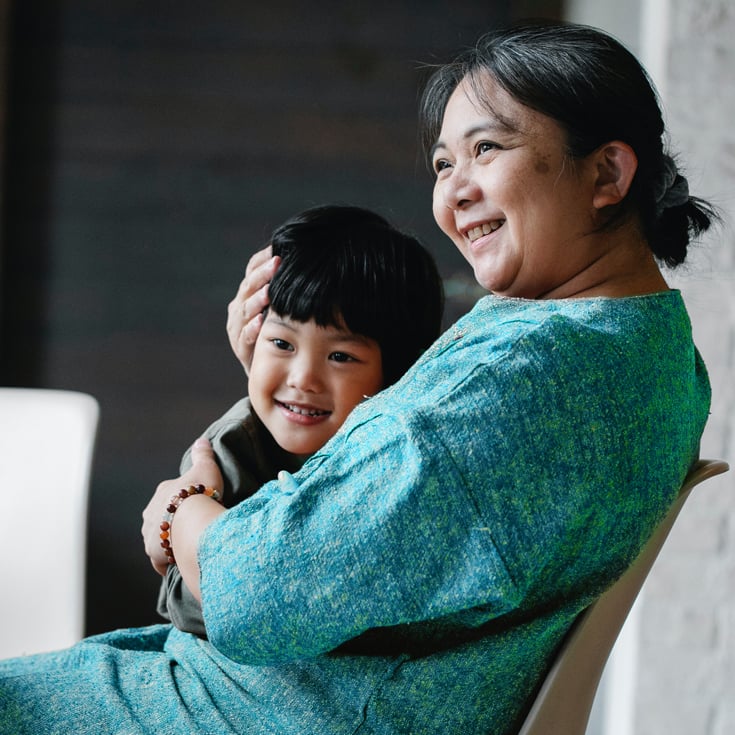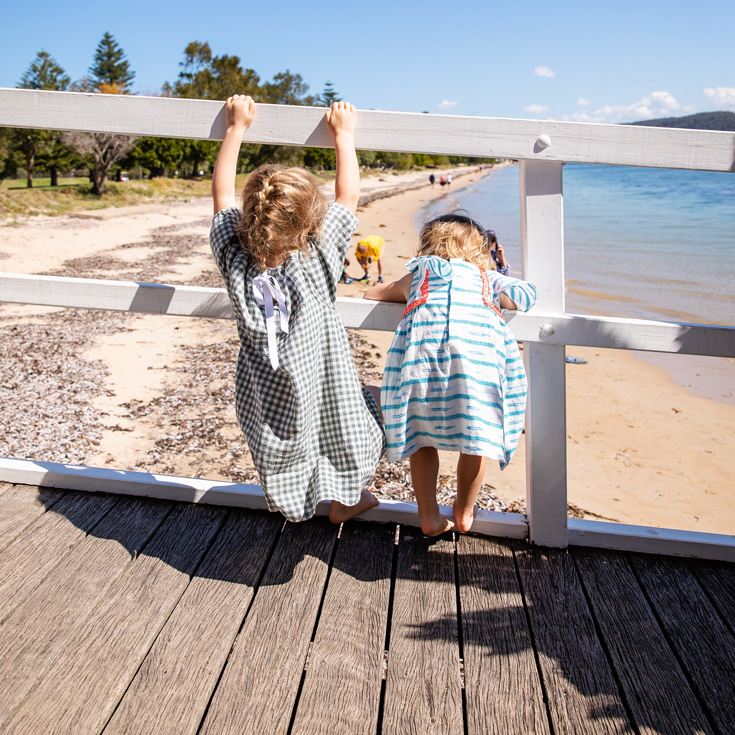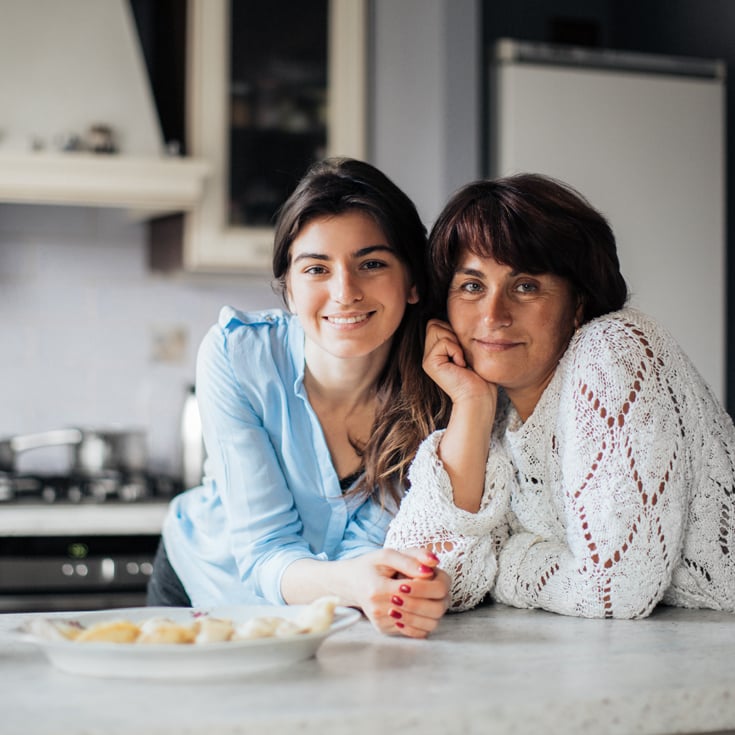Home Articles DO try this at home: Involving the kids in philanthropy
DO try this at home: Involving the kids in philanthropy
Written by Fiona Higgins
There’s no time like the present for getting your children involved in giving. Yet so many givers are unsure about exactly how to do that, or what it might mean for their giving fund. Below are some FAQs we’ve heard from our clients – and some APS answers to provoke discussion over the kitchen table!
What’s the right age to start?
“My primary schooler seems too young to get involved in our giving fund. My secondary schooler seems too busy/hormonal/avoidant…”
What’s the right age? You already know the answer to this; there is no right time – but there’s always an entry point for engagement in community issues, whatever your child’s age. It all starts with helping younger family members to identify what matters most to them.

"There’s always an entry point for engagement in community issues, whatever your child’s age."
How do we identify what matters most to our children?
Have a conversation with them. Some questions you might like to ask, depending on their age and disposition, might include:
- What excites you most about being in the world right now?
- What worries you most about being in the world right now?
- What are you curious about, in terms of how society works?
- What interests you most about the people or organisations our giving fund supports now?
- Are there any other people or organisations our giving fund should support in the future?
In our experience, younger children often have strong emotional responses to the plight of animals and wildlife, while older children are often drawn to environmental issues and social justice. If your child’s answers are not so concrete, you may wish to prompt them with these further questions:
- What is the best thing about your life right now?
- Who or what do you value most?
- If you could make a single change in the world, what would it be?
What do I do with the answers?
Use them as a guide to research charities working in areas of interest to your children. Get your kids involved in learning more, attending events or even visiting these charities – understanding what they do and why, as well as how it’s making a difference.
Some of our clients allocate an annual proportion of their giving budget to the cause areas of greatest interest to their children, asking them to research and put forward ideas for support by the giving fund at their annual meeting.

"Younger children often have strong emotional responses to the plight of animals and wildlife, while older children are often drawn to environmental issues and social justice."
How do I even have the conversation with my kids about our giving fund in the first place?
Be honest. For example:
“Mum and Dad have been really [insert preferred adjectives, e.g. hard-working, clever, committed, courageous, lucky] and are now in a position to help others who need it. We decided we didn’t want to help just once, so we’ve created a special giving fund that will exist forever. We would like to get your help on deciding how we can make the world a better place through this giving fund, which we’ve called [insert fund name].”
If there is sensitivity around philanthropy as potentially detracting from inheritance, metaphors can be powerful. Here are some our clients have used previously:
For younger children
If you saw a monkey at the zoo that had many more bananas than it needed, but kept all of those bananas to itself, even when there were other really hungry monkeys around it – what would you hope that monkey might do?
For teens
You know that feeling you get the day before your birthday, or [insert religious holiday] or the last day of school/semester? What if I told you we could actually grow more of that good feeling – inside of ourselves, in our community and all around the world – just by being more generous? What would you say – should we be more generous?
For almost-adults
You’re exiled on a desert island and allowed to choose only three of five possible protective factors – fresh drinking water on demand, an all-weather shelter, food you don’t have to hunt or gather, human company, or the absence of humans who are trying to kill you. Which three do you choose and why?
This scenario usually engenders lively debate about tough choices. When everyone has made their choices, you can add a version of the following:
“That’s an interesting scenario that, thankfully, we almost certainly won’t have to face. Yet for so many humans right now, these five basic protective factors are missing in their lives. That’s part of the reason we’ve decided to share some of our family’s resources, by setting up a giving fund. We think we have more than enough to share with humans less fortunate than us. Do you think we can afford to share in this way?”

"Get your kids involved in learning more, attending events or even visiting these charities – understanding what they do and why, as well as how it’s making a difference."
What charities can my children volunteer at, or get involved with?
Many organisations cannot accommodate volunteers under 18 years of age, due to risk or compliance concerns. APS can help you cut through the quagmire by suggesting volunteering opportunities that are family-friendly, in your local area, and reflect your family’s specific interests.
Some involve annual milestone events such as Clean Up Australia Day, are seasonal (e.g. packing Christmas hampers), or involve doorknocking for specific national fundraising appeals such as the Salvos’ Red Shield Appeal. There are also specific charities such as Kids Giving Back, Kids in Philanthropy and SchoolAid, that support and empower children and young people to contribute meaningfully to their local community.
It’s all too hard / I don’t have time / my children are disengaged. What then?
APS can help. We have developed a MAD (Making a Difference) workshop, which helps clients to have structured conversations about what matters most to younger family members, how they might involve themselves in the family’s giving fund, and in what other ways they might contribute to the community. Typically, APS can incorporate these MAD workshop take-outs into a giving fund’s strategy, so that younger family members have a real and defined voice at the decision-making table.
APS can also support the next generation with templates and tools to research causes and organisations, and put forward ideas for support to the giving fund.
(And when a non-parent is facilitating this process, children are – surprise, surprise – often more prepared to participate.)
Need some support?
If you would like to talk through your next generation’s needs, please contact Giving Services via kstone@australianphilanthropicservices.com.au
